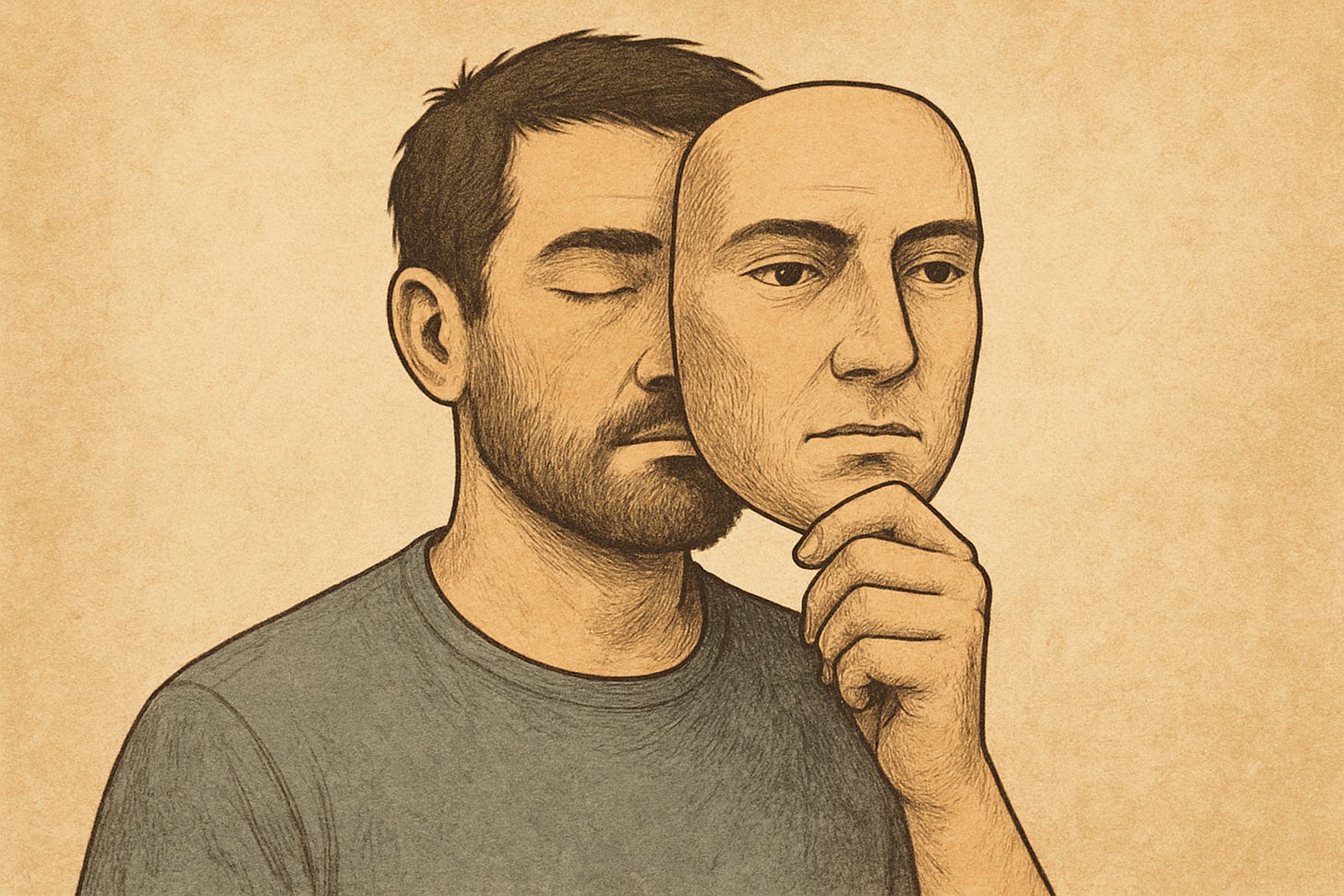Awakening is often imagined as a kind of endpoint—a clean break from illusion. But for many, the initial glimpse or even a sustained recognition of no-self is followed by a quieter, more challenging process: the dismantling of the habits that still uphold the self-structure, even after the idea of a separate self has been seen through.
One of the most overlooked ways I find that this happens is through the protection of our perceived imperfections.
Even when it’s seen that “I” is just a story, conditioning doesn’t vanish overnight. Certain patterns linger. And one of the most persistent is the impulse to shield parts of ourselves from being fully seen.
We might no longer feel like we are the ego, but when something in us hides a mistake, defends a flaw, or subtly distances itself from shame, the mechanism of “I” is still in motion. Not as a solid self, but as a reflex of contraction. An old residue that says: this part of me must be kept separate, must be protected.
It’s sneaky, because it doesn’t feel like ego in the traditional sense. There may be no loud inner voice claiming superiority or inferiority. But in the moment we subtly avoid vulnerability—in the moment we polish our image just a little to avoid discomfort—we’re reinforcing the illusion of a center that needs defending.
Ironically, what holds these fragments of identity in place isn’t pride—it’s often the fear of exposure. The fear that if we let these parts be fully seen, we’ll lose love, respect or safety. But here’s the deeper truth: what fears being seen is precisely what maintains the illusion of being someone separate.
This became clear to me in a moment I didn’t expect. I was speaking about awakening with someone and noticed a hesitation to admit something simple—an area of life where I still struggled. It wasn’t dramatic, but there was a subtle pull to reframe it, to appear just a little more “together” than I felt. That moment of contraction was like a flash of insight. I could feel the effort to protect an image. And more importantly, I could feel that this image was what gave the illusion of “me” its shape.
It wasn’t about shame or wanting to deceive. It was simply an old reflex: protect, manage, control. But in seeing that reflex clearly, it softened. And in letting that part of me be seen—without fixing or hiding—I noticed how much energy had been tied up in protecting something that didn’t need protection.
When we soften around our imperfections—when we stop managing how we’re perceived, stop explaining, defending, or justifying—we’re not just becoming more authentic. We’re loosening the very structure that gives rise to the felt sense of a self.
Awakening, as I see it, isn’t just realizing there’s no one here — it’s allowing life to move freely without anyone at the center. And that means everything gets to be included, even what feels messy, shameful, or unresolved.
If the self is perpetuated through exclusion, wholeness is found in radical inclusion.
So the invitation is this: notice where you still protect an image. Notice where you subtly avoid being seen. And instead of trying to fix or transcend those parts, what happens if you just let them be revealed?
Not to get rid of them, not to “heal” them—but just to stop hiding. To let life wear all of itself openly.
In that kind of rawness, the remnants of “I” start to dissolve—not by force, but because there's simply nothing left to protect.





Love this. Thank you for sharing Marius.
Great little article! God, now I noticed even more the areas and things in my life that I tend to hide and not let be seen... I tend to be self-conscious about things like age spots, a bunion on my left foot, stuff like that. Ugh...